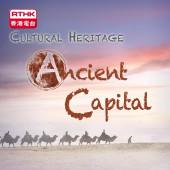 Loading ...
Loading ...Castle on the Prairie
2016-03-01
返回
Castle on the Prairie
2016-03-01
In 1798, after British poet Samuel Taylor Coleridge read Hakluytus Posthumus, or Purchas his Pilgrimes by English author Samuel Purchas, he had a dream of one of the scenes from the book, prompting him to wake up and write Kubla Khan: Or, A Vision in a Dream. A Fragment. The poem depicts the heavenly city constructed during Kublai Khan’s rule of China called Xanadu, a word which has since become synonymous with paradise on Earth. This utopia was Shangdu, the Yuan Dynasty capital built on a prairie.
The city is located in the present Plain Blue Banner administrative subdivision of Xilingol League in the Inner Mongolia Autonomous Region. During the Yuan Dynasty, Khan established two capitals in order to reinforce his rule. His headquarters in Beijing became known as Dadu, while Kaiping, the city on a prairie which he built from scratch and where he began his reign, was renamed Shangdu. Every spring and autumn equinox, each emperor of the Yuan Dynasty would travel to Shangdu and manage political affairs from there. Sadly, this heart which pumped lifeblood into Eurasia only beat for a brief century. After the completion of its construction in 1256, Shangdu was destroyed by the Red Turban Army in 1358, bringing an end to the glorious Yuan Dynasty rule of the Mongol Empire.
In 2012, Shangdu was made a UNESCO World Heritage Site, being deemed as the capital on a prairie which “witnessed the unique fusion of agrarian Han Chinese and nomadic Mongolian civilisations in northern Asia.” The local Mongolian herders have preserved the characteristics of this cultural intersection to this very day, serving as the guardians of Xanadu, a city which has been passed down through the generations.
Producer: Clarissa Ma
Broadcast on 1st March 2016
on RTHK TV31 6:30 p.m.
The city is located in the present Plain Blue Banner administrative subdivision of Xilingol League in the Inner Mongolia Autonomous Region. During the Yuan Dynasty, Khan established two capitals in order to reinforce his rule. His headquarters in Beijing became known as Dadu, while Kaiping, the city on a prairie which he built from scratch and where he began his reign, was renamed Shangdu. Every spring and autumn equinox, each emperor of the Yuan Dynasty would travel to Shangdu and manage political affairs from there. Sadly, this heart which pumped lifeblood into Eurasia only beat for a brief century. After the completion of its construction in 1256, Shangdu was destroyed by the Red Turban Army in 1358, bringing an end to the glorious Yuan Dynasty rule of the Mongol Empire.
In 2012, Shangdu was made a UNESCO World Heritage Site, being deemed as the capital on a prairie which “witnessed the unique fusion of agrarian Han Chinese and nomadic Mongolian civilisations in northern Asia.” The local Mongolian herders have preserved the characteristics of this cultural intersection to this very day, serving as the guardians of Xanadu, a city which has been passed down through the generations.
Producer: Clarissa Ma
Broadcast on 1st March 2016
on RTHK TV31 6:30 p.m.
‘Cultural Heritage - Ancient Capital’ is the 5th series of 'Cultural Heritage' programme, with 8 episodes of documentary to explore different important capitals throughout the thousands of years in the Chinese history. These capitals, though all facing modernization nowadays, the marks of civilization glories can be traced, and the precious value of traditional spirit can still be found.











